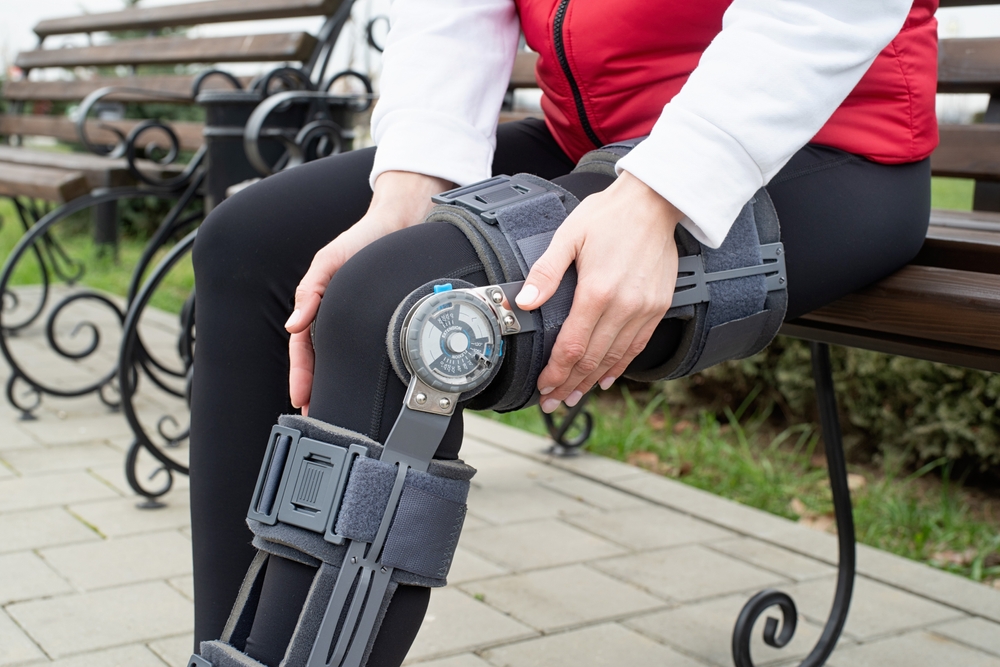Physical Therapy After an ACL Reconstruction Surgery
According to data from 2012, approximately 200,000 ACL injuries occur annually in the U.S., and in turn, 100,000 ACL reconstruction surgeries occur per year (1). As you may suspect, this surgery is one of the most common orthopedic procedures. While the surgery addresses the anatomical injury in the knee, the rehabilitation before and after surgery plays a big role in postoperative outcomes and return to prior level of function. In this post, we will discuss the common progressions to expect with physical therapy following an ACL reconstruction.
Before we begin talking about the rehab after surgery, it is noteworthy that preoperative rehabilitation is becoming more common to gain optimal strength and mobility. The primary goals before surgery are to reduce swelling and pain, restore full range of motion, promote normal walking pattern, and prevent loss of muscle tissue. The emphasis on motion is to decrease the risk of post-surgical stiffening of the repaired tissues also known as arthrofibrosis. Approximately 21 days before surgery is a sufficient timeframe and gives the patient an opportunity to build a relationship with their physical therapist. Wilk et. al. have found that patients who begin physical therapy prior to surgery are able to progress more easily in the post-operative phases.
Initially after surgery, the first focus is restoring motion and returning to a normal walking pattern. Typically, the patient will be able to bear full weight on the surgical limb right after surgery. Patients will use crutches during the first week and progress to walking independently in the first 10-14 days. In the initial postoperative phase, knee extension or straightening of the knee is addressed to promote normal joint mechanics. In addition, your therapist will perform manual techniques to improve mobility of the knee cap or patella since it needs to glide atop the knee during walking and standing. Icing and compression is another important aspect of the beginning stages to reduce inflammation.
Strengthening of the affected limb begins small, targeting all the muscles around the knee to wake them up after surgery. Your therapist may use electrical stimulation to promote firing of the quadriceps muscles which are on the top of the thigh right above the knee. This stimulation feels like small pin pricks and is set to each person’s tolerance. This muscle group is especially important to target as the quads oftentimes turn off in the presence of knee pain and swelling. They also play an important roll in walking, standing up from a chair, and most sports-related activities.
Next, your physical therapist will begin to address knee proprioception or awareness of the limb in space. This is especially important in promoting optimal body mechanics to reduce excessive stress on the new ACL and decrease the risk of re-injury. This may begin with double leg squatting mechanics and progress towards single leg balancing. The higher levels of neuromuscular control include single leg activities over unstable surfaces while also completing a task with your arms. In addition to improving muscle firing and body awareness, neuromuscular re-education also includes instilling confidence in the surgical limb as not to favor the knee.
Your therapist will continue to make clinical decisions and progress the applied loads as tolerated. As therapists, we are looking for pain ratings before, during, and after an activity and any signs of inflammation since these signs may indicate an overaggressive approach to rehab. While there are week-by-week guidelines, each progression is individual to the patient with their return to function and sports-related goals in mind. Typically, full return to sports occurs between 9 and 12 months after surgery. Each injury is unique and different, so it is important to talk with your surgeon and physical therapist regarding your own specific treatment and goals.
Jill Hoffman PT, DPT is a physical therapist specializing in treating orthopedic conditions.
- Wilk KE, Macrina LC, Cain EL, Dugas JR, Andrews JR. Recent advances in the rehabilitation of anterior cruciate ligament injuries. J Orthop Sports Phys Ther. 2012 Mar;42(3):153-71. doi: 10.2519/jospt.2012.3741. Epub 2012 Feb 29. PMID: 22382825.

